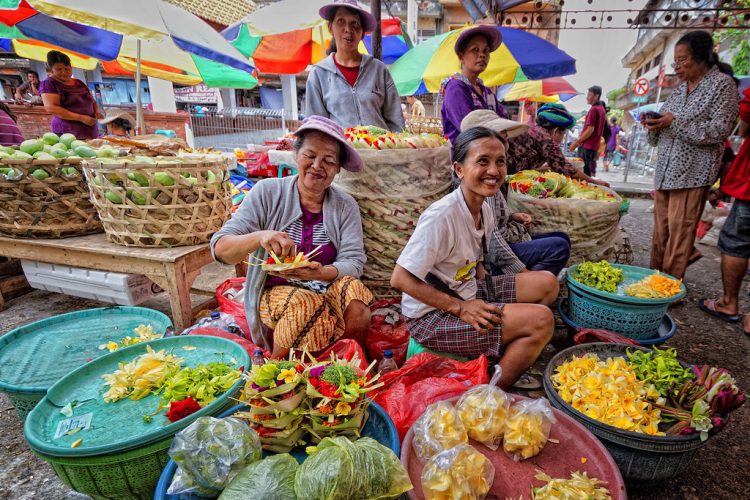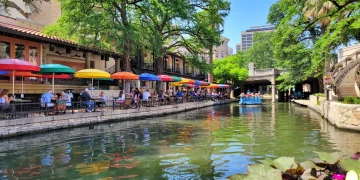Traditional markets hold an essential place in the cultural and economic landscape of societies across the globe. They are more than just commercial spaces; they are vibrant, dynamic hubs where people gather to share their lives, stories, and traditions. From local produce to intricate handmade crafts, traditional markets are a reflection of a region’s heritage, its people, and its way of life. This article explores the vital role traditional markets play in shaping and preserving local culture, their social significance, and their impact on the communities that rely on them.
The Role of Traditional Markets in Preserving Cultural Heritage
Traditional markets have been at the heart of local communities for centuries. These markets are not only about buying and selling—they are repositories of local culture, traditions, and history. The types of goods sold, the ways in which trade is conducted, and even the architecture of the markets reflect centuries of cultural evolution and shared practices.
In many cultures, traditional markets are places where people interact, exchange goods, and share their daily experiences. They are where local artisans and farmers showcase the fruits of their labor, often using methods passed down through generations. In this way, these markets serve as living museums, preserving ancient crafts, skills, and food traditions.
For instance, in Morocco, the souks of Marrakech and Fez are steeped in centuries-old traditions. The intricate handwoven carpets, leather goods, and spices sold in these markets are the result of skills and techniques handed down through generations. The stalls themselves are an extension of the artisans’ creativity, with their architecture reflecting the unique Moroccan style. The lively haggling and bargaining between vendors and customers provide a glimpse into the past, as the act of negotiation has always been an integral part of Moroccan commerce.
Similarly, in India, the Chandni Chowk market in Delhi has existed for over 400 years and is deeply tied to the city’s history and cultural identity. The market is a hub for traditional textiles, spices, jewelry, and sweets, offering insight into the rich cultural diversity of India. The traditional practices of selling and buying are still alive here, with the market’s narrow lanes and bustling atmosphere providing an authentic glimpse of old-world India.

Traditional Markets as Social and Cultural Centers
In addition to being centers of commerce, traditional markets are also social hubs. They are gathering places for people from all walks of life, providing a space where social bonds are strengthened and cultural exchanges take place. People visit markets not only to buy products but also to socialize, share news, and engage with the local community.
The role of traditional markets as social centers is particularly evident in places like Japan, where the Tsukiji Fish Market in Tokyo was not just about fish trading; it was also a meeting point for businesspeople, chefs, and tourists. The market played a central role in shaping the Japanese culinary culture, particularly in terms of the importance placed on freshness and quality. It also provided a space for people to interact and learn from one another.
In Thailand, the Chatuchak Market in Bangkok is not only a shopping destination but also a place for cultural exchange. With thousands of vendors selling goods ranging from antiques and handmade crafts to clothes and street food, the market draws people from all over the world. As one of the largest markets in the world, Chatuchak also acts as a melting pot of cultures, allowing visitors to experience Thailand’s rich and diverse heritage.
Traditional markets also play an important role in maintaining a community’s social fabric. In many cultures, markets are where festivals and important social events take place. In Mexico, for instance, the Mercado de la Merced in Mexico City hosts special events and celebrations tied to religious holidays and cultural festivals. The market becomes a focal point for communal activities, such as Day of the Dead celebrations and Christmas, where vendors and customers come together to celebrate with food, music, and dance.
Markets as Gateways to Local Food Cultures
One of the most significant ways in which traditional markets influence local culture is through food. These markets are often the best places to experience a community’s culinary heritage. Street food vendors and local sellers showcase dishes and ingredients that reflect the region’s history, geography, and cultural influences.
In Thailand, markets like Chatuchak and the floating markets offer a wide array of street foods, such as pad thai, som tam (green papaya salad), mango sticky rice, and boat noodles. These dishes are not just about flavor; they are part of the country’s cultural identity. The use of local herbs, spices, and fresh ingredients speaks to the deep connection Thai people have to the land and their traditional ways of preparing food.
Similarly, in Morocco, food plays a central role in the culture of the souks. The traditional tagine, a slow-cooked stew made with meat, vegetables, and aromatic spices, is an essential part of Moroccan cuisine. The souk is a place where these dishes are prepared fresh, with ingredients such as saffron, cumin, coriander, and preserved lemons. The market’s vibrant food stalls offer a sense of community, with families gathering together to enjoy these communal meals.
In Turkey, the Grand Bazaar in Istanbul is home to a wide range of foods, from baklava and kebabs to pide (Turkish pizza). The food sold in the markets is a reflection of the country’s diverse cultural influences, from the Ottoman Empire to Persian, Arabian, and Mediterranean cuisines. Visitors to these markets can enjoy the culinary traditions that have shaped Turkish society for centuries.
Traditional markets also provide a space for people to explore and discover new tastes and ingredients. For example, in India, markets like Chandni Chowk offer a chance to sample regional specialties like parathas, jalebis, and chaat, while in Vietnam, markets such as the Ben Thanh Market in Ho Chi Minh City serve up dishes like pho and banh mi that are an integral part of the country’s food culture.
The Decline and Revival of Traditional Markets
While traditional markets have played an essential role in local cultures for centuries, the advent of modern retail and e-commerce has led to the decline of many markets around the world. Supermarkets, online shopping, and international chain stores have made it easier for people to buy goods without visiting local markets. This shift has impacted not only the economy but also the social dynamics of many communities.
However, in recent years, there has been a resurgence of interest in traditional markets, driven by a growing appreciation for authentic experiences, locally produced goods, and cultural preservation. People are increasingly seeking out these markets to connect with the past and experience the vibrant, authentic cultures that have long defined these spaces.
The revival of traditional markets has also been supported by efforts to promote sustainable tourism and local economies. Governments and non-profit organizations are working to ensure that traditional markets continue to thrive, often by implementing measures to preserve the cultural heritage associated with them. For example, UNESCO has designated several traditional markets as part of the world’s intangible cultural heritage, recognizing their importance in maintaining cultural diversity.
The Future of Traditional Markets
As global society continues to evolve, so too will traditional markets. The digital age may bring challenges, but it also presents new opportunities. For example, many traditional markets are beginning to adopt technology to improve their customer experience. Some markets now offer online shopping platforms, allowing consumers to purchase locally produced goods from anywhere in the world.
At the same time, traditional markets are increasingly being recognized as important cultural and heritage sites. This recognition has helped revitalize markets in many cities, drawing in tourists who seek to experience local culture and support small businesses.
Ultimately, traditional markets will continue to play an important role in the global cultural landscape. They provide a unique opportunity to engage with local culture, support artisans and farmers, and experience the richness of a region’s history. Whether you’re in Istanbul, Bangkok, Mexico City, or Marrakech, the experience of wandering through a traditional market offers more than just a shopping experience—it’s a journey into the heart of the community and its culture.





















